Framing
I have always been a part of a school community. Ever since I was a little kid going to work with my dad at Skidmore College and playing with office supplies in the conference room while he read admissions files, I observed the ways in which the culture of learning fosters a uniquely strong community. This academic world defined my childhood. My parents had the coolest friends. They were intellectually curious, cultured, well read, civically engaged, and open to the world around them. They had fascinating hobbies, were constantly hopping on a plane to present at a conference in a faraway city, and inviting my parents to the latest lecture or concert on campus. I first thought that my parents were drawn to academic communities because of their shared passion for the liberal arts. This definitely was a driving force, but what I have come to realize is that my parents were also drawn to being a part of a community of lifelong learners. I never fully understood the bond that forms in learning communities until I graduated from college, entered a challenging job market (oof, 2008), and was faced with the question of “what next”? The only factors of my job search that I knew for certain were: 1) I loved history, 2) I loved being a student, and 3) that I felt most at home at school, which makes sense because I grew up in faculty housing on a boarding school campus. I wasn’t ready for graduate school – I knew enough to recognize that I needed more life experience and clarity before committing myself to serious student loans – but I also knew I was not meant to work in a cubicle, writing research reports or pitching slide decks. I needed to be a part of the independent school world that had been so transformative in my own educational journey.
Stick with me… I know this is a long-winded way of getting to my point 😊.
When I finally made the jump into teaching 15 years ago, I knew immediately that it was way harder than I had anticipated. I gained instant respect for all of my former teachers, including those who I had unfairly dismissed as unprepared or not engaging. Teaching is intense, especially in the beginning, and the only thing that really gets you through a challenging experience are the people around you – your mentors, colleagues, students, and personal support team. I quickly learned that if I was going to be in the trenches of grading, lesson planning, pseudo-counseling, and coaching, I needed to connect with and learn from those who were in the trenches with me. I started sitting in on my colleagues’ classes, auditing courses that I found fascinating, and ducking into a class to observe an advisee in a new academic setting. I posted up at the faculty table in the dining hall early for breakfast so that I could hear how veteran teachers approached their day. I pushed myself to ask rookie questions in department meetings and to develop a coffee habit so that I could listen in on teacher chats in the faculty lounge during passing periods. I was the first to the office and the last to leave on most days because I had so much to do and because my professional community was my lifeline. I survived the first few years of my teaching career because of the people around me.
Mentorship has been a huge theme throughout my teaching career. As a group, teachers naturally tend to be quite generous with their time and support. Many gracious colleagues carved out time that they did not have to mentor me in those early years of my career. My first department chair, Dr. Naeher (I still cannot call him Bob because he taught me when I was in high school), once told me to pick a weeknight to call my “off night” and to protect that off night as much as possible throughout my career. To this day, I try to take an “off night” each week, and I show up as a noticeably better teacher for my students when I do. My last department chair when I was at Baldwin, Gretchen Boger, believed in me in ways that I didn’t know I needed someone to believe in me. Gretchen is a true historian and a gifted teacher, so to have someone of her caliber support and praise me as I transitioned into “mid-career” teaching meant the world to me. These relationships also challenged me to reflect on the role that positive mentorship, praise, and validation play in my identity as a teacher. Both Dr. Naeher and Gretchen were invested in me as a teacher, as a scholar, and as a colleague. I think this is why mentorship, in all its forms, is so important to me at EPS. Community was the reason why I got into teaching, the reason why I survived beginning teaching, and the reason why I stay in education. I can’t imagine going to work every day and not having a close, tight-knit relationship with my colleagues. I brainstorm, collaborate, process, celebrate, and commiserate with my colleagues every single day, and they are why I keep teaching.
I came to EPS seven years ago because of the people. Let’s be honest, it wasn’t the office park campus, the famed Ultimate Frisbee team, or the lack of green space that tipped the scales for me. It was the out-of-the-box thinking of David Fierce, the thoughtful curiosity of Allison Luhrs, the innovative solutions coming from Jonathan Briggs, the passion and selflessness that Bess McKinney exudes when you first meet her, and the big, deep thinking that every EPS adult brings to their subject matter. I was blown away by the talent and dedication of the faculty and staff, especially for such a young, small school, and I left my interview day knowing that there must be a secret sauce at EPS if they are able to attract and retain people of this caliber. I accepted the job the next day, completely unclear about the courses and subjects that I would teach, but certain that I wanted to teach alongside these people.
Teaching at a school for seven years is not that long of a stint, but given that EPS is such a young school, I often think of EPS lifespan in terms of dog years, which makes seven years feel like a really long time. So much has changed at EPS – the campus footprint, the student body demographics, the curriculum, the advent of virtual learning, and the adult community. Many of the people who played such a big role in my decision to come to EPS have moved on, and new faces have joined and contributed to our growth. In fact, Ed Castro and I are the last of our 2017 cohort still at EPS. In some ways, I feel stuck in 2017. I constantly refer to the “good old days” of our shared humanities office in the dimly lit Annex jungle. This is a testament to just how important and impactful my colleagues have been in my EPS career, and it speaks to the fact that I clearly am a relational person. While the adult community has significantly changed in the past few years (as have I), the people I get to work with remain my top reason for staying at EPS. From my collaborative partnership with Jeff Bandel in US History to co-planning an EBC trip to London and Edinburgh with Verity to formally and informally mentoring new colleagues such as Jeff Covington and Diana Gonzalez-Castillo, I can say with confidence that I now get why my parents loved being a part of a professional learning community so much.
The evidence, reflections, and goals shared in this section on relational cultivation are probably the most meaningful aspects of my “professional portfolio” and time at EPS. I am excited to come to work each day because of the belonging, trust, and connection that comes from teaching and learning in community with others (both adults and students).
Collegial Dynamics
| Indicator | Comments & Evidence |
| Develops mutually respectful and productive relationships with colleagues | I really hope so because my colleagues mean the world to me. I enjoy processing, debriefing, and connecting with colleagues outside of school. I prioritize being a present and respectful member of our adult community. This includes attending social functions like happy hours, book talks, museum exhibit openings, trivia sessions, and sports games. One area of collegial dynamics that I spend a lot of time thinking about and working on is “code switching.” By this I mean knowing the context, the audience, the boundaries, and the tone of a particular interaction. I work hard to be formal and professional in a professional setting like a faculty meeting or planning session. Additionally, I enjoy my colleagues as people and friends and appreciate the opportunity to see them outside of school in a more informal setting like happy hour or an electric boat ride in Seattle. I communicate respectfully, professionally, and probably far too often with colleagues at work (email, confidential correspondence with counselors, etc.). |
| Partners consistently with colleagues on projects | Co-teaching is baked into our interdisciplinary approach to teaching the humanities at EPS, so I have been really stretched to grow as a collaborator in the past seven years. This is one aspect of my teaching practice that EPS truly revolutionized. Rarely do I teach, plan, or create alone at EPS, and the final products are always better because they were designed together. Currently, I co-teach courses in 9th grade (Connections, Migration, Authority) and 11th grade (US History / American Studies). Not only do I team teach with fellow history teachers, but I also collaborate with literature teachers of the same course pairing (ex: Jen Oakes in Authority). Each trimester I aim to have at least one major moment of integration with literature teachers and courses (ex: the Puritan Jamboree). I often and willingly play the role of organizer, planner, and note-taker in these collaborations. This is probably a strength and an area of growth for me. I tend to step in and pick up the slack for the sake of efficiency and making sure that the work is completed to my standards. I often coach my students on not bulldozing group projects, and I could probably benefit from taking some of my own advice and giving colleagues space to grow into a role in their own way. Other moments of significant collaboration at EPS: EBC planning and chaperoning (ex: co-planning the London & Edinburgh 2024 trip with Verity), civics curriculum development for 12th grade with Wen Yu, and partnering with Karen Mills to jointly propose new humanities curriculum for the 9th and 10th graders in ADIG. |
| Engages in collegial activities hosted by the school | See above comments for specific examples. |
Community Membership & Support
| Indicator | Comments & Evidence |
| Acts as a strong and positive ambassador of EPS | Admissions: One aspect of the faculty role that I really enjoy is participating in the admissions process. Capturing and sharing the EPS experience with prospective families offers a unique opportunity for me to reflect on what it is that I love about this place and why I believe in our approach to learning. I love chatting with students and parents during the “interview” process, sharing our curriculum and culture in mock lessons, and sitting on panels representing the humanities in our academic program. Communicating & Partnering with EPS Parents / Guardians: From developing relationships with EPS families through the advisor role or supporting a student and their family through a difficult academic period in one of my courses, I firmly believe that building connections and inviting families into all aspects of the EPS experience serve the students best. I work hard to be honest, prompt, and empathetic in my communications with families and to center the student in all of the work. One difficult yet meaningful example of this partnership with families came a few years ago with one of my advisees who had to step away from school for a few weeks to focus on mental health and personal safety. Her parents are Chinese and do not speak much English, so Wen Yu and I worked together to communicate and translate for the family. We brought Michelle, John Stegeman, and the student’s teachers into the discussion, and made space for the parents to process and feel supported. These were draining discussions, but I quickly realized that the parents just wanted to know that they weren’t alone in this process and that trained professionals were here to walk them through the next steps. Her mom broke down crying in a meeting and I remember what it felt like to see an adult so vulnerable, worried, and desiring connection. This family relationship made all the difference in supporting the student through EPS. EBC Trip Leader & Chaperone: One of my absolute favorite parts of EPS is getting out into the world with students. This requires a lot of work, planning, trust, energy, and adventure, but it is always worth it. I am always mindful of our school’s mission and vision as we shepherd students out into the world, and I work hard to design trips that are in line with our school’s values and to communicate with students as they represent EPS abroad. For example, before bringing 12th graders to the British Museum on the London EBC (2024), we discussed the role of colonialism is building and maintain a national museum like this one. I felt that this was an important framing conversation to have with the students, especially because many of them identified with a culture and region that had once been colonized by Great Britain. This discussion felt like an extension of an EPS history classroom, and students were able to bring their curiosities with them into the museum experience. Professional Development: I have always found it energizing and rewarding to engage in professional development within and beyond my EPS experience. I enjoy meeting fellow educators, learning about different educational experiences and approaches, and taking deep reflective dives into specific parts of my teaching practice or content area. Since coming to EPS in 2017, I have attended a Gilder Lehrman teaching seminar at Oxford University on the Age of Lincoln and participated in NWAIS Emerging Leaders Institute. I have signed up for extended learning seminars on AI and Academic Integrity through NWAIS and I have participated in the local NWAIS annual conference. I always return from these experiences feeling refreshed and recommitted to my work at EPS. |
| Attends school events and student performances | Coming from the boarding school world, I know the value of getting to know students outside of the classroom and being present in all aspects of the life of the school. This is what supporting and educating the “whole child” really means to me. In my first years at EPS, getting to sports games or staying late to see the play or attend an art show was super easy. I would aim to see a couple of events each trimester, particularly ones involving my current students. Once I had kids of my own, making it to events outside the academic day (and normal childcare hours) became harder. I prioritize the big moments (plays, tailgates, homecoming, etc.) but definitely feel that my attendance has shifted at these events. I am hopeful in the next year or two, as childcare and school schedules stabilize for my own family, I will be able to make it to a few more games. Plus, I am a huge sports fan and love supporting our teams, so I want to make it to more games / matches in the future. |
| Participates visibly in the daily life of the school | I try to be a supportive and visible presence at all-school gatherings such as EagleCon, class meetings, advisory experiences, clubs and affinity group spaces, and in the hallways and student hangout areas. Some of my favorite conversations with students happen between passing periods or in the LPC over breakfast. Faculty facilitator of student affinity space (Young Women’s Affinity Group), 12th Grade Civics Program, Civic Engagement Club (former faculty co-sponsor with Jeff) This is minor, but I often stay late on campus because I have childcare until 4 / 4:30 and that is the only time that I can really get work done. You start to get to know the kids who hang out after school for sports practices, theater rehearsals, debate prep, or just waiting for a parent to pick them up. It is cool to be an adult presence on campus later in the afternoon and to witness what the post-school day routine is for kids. |
| Recognizes and supports diversity in all its forms | Faculty facilitator of the Young Women’s student affinity group Intermittent member of adult affinity groups (women, parent/guardian caregiver) & the faculty-staff EICL group. Initiated & guided the EICL self-study (“audit”) in Social Science Discipline Faculty member of the EICL Curriculum and Cultural Competency Focus Group (2020 – 2021) with Katie Dodd, Alicia Hale, & Emma Ferguson EICL and SEL work within and Social Science curriculum development and lesson planning (ex: Immigration Podcast, developing an LGTBQ+ History unit) Independent studies with students who want to explore an aspect of their identity in curriculum (ex: lesbian feminism, Romanian history, female political leadership) |
A Visual History:

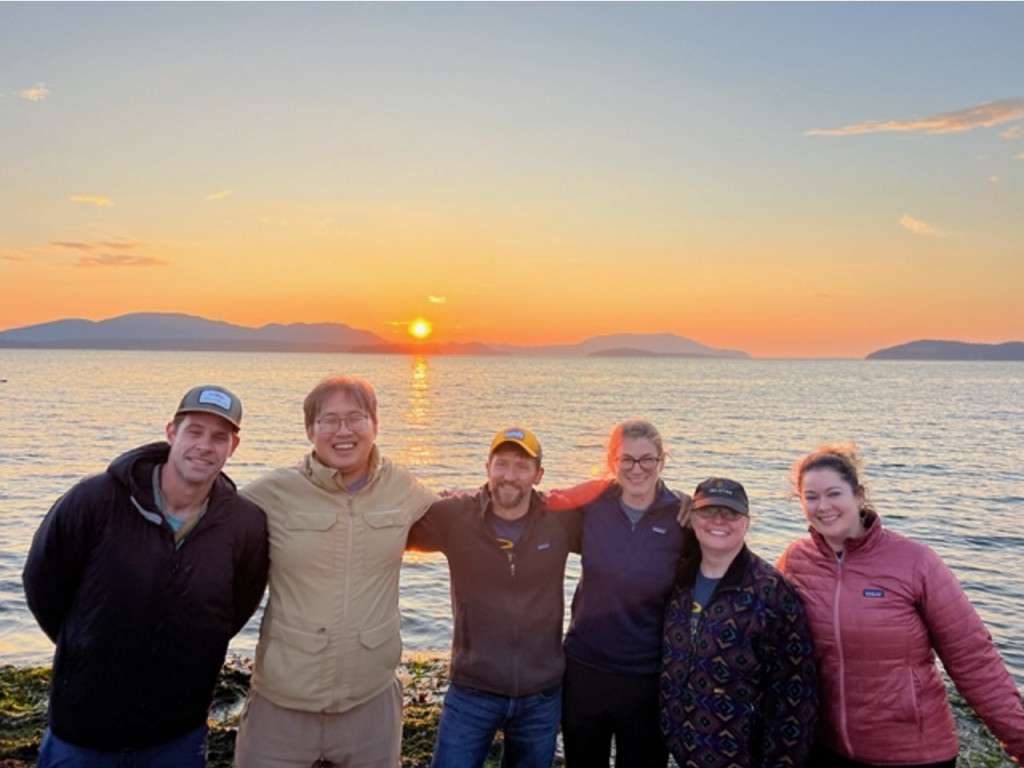
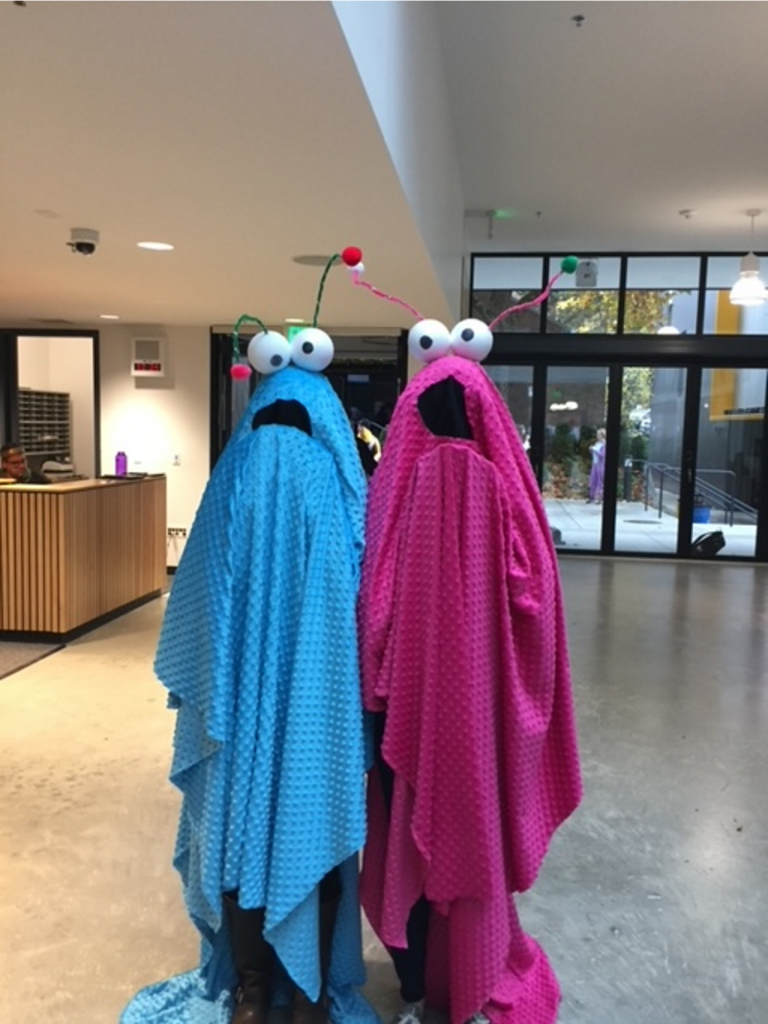
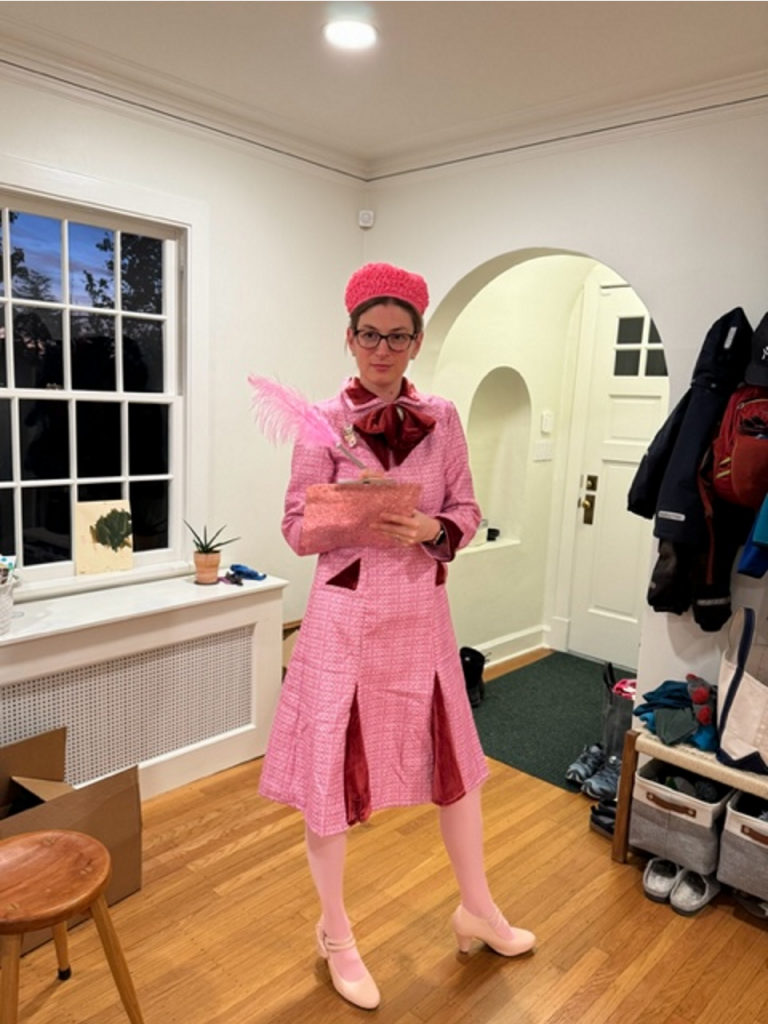

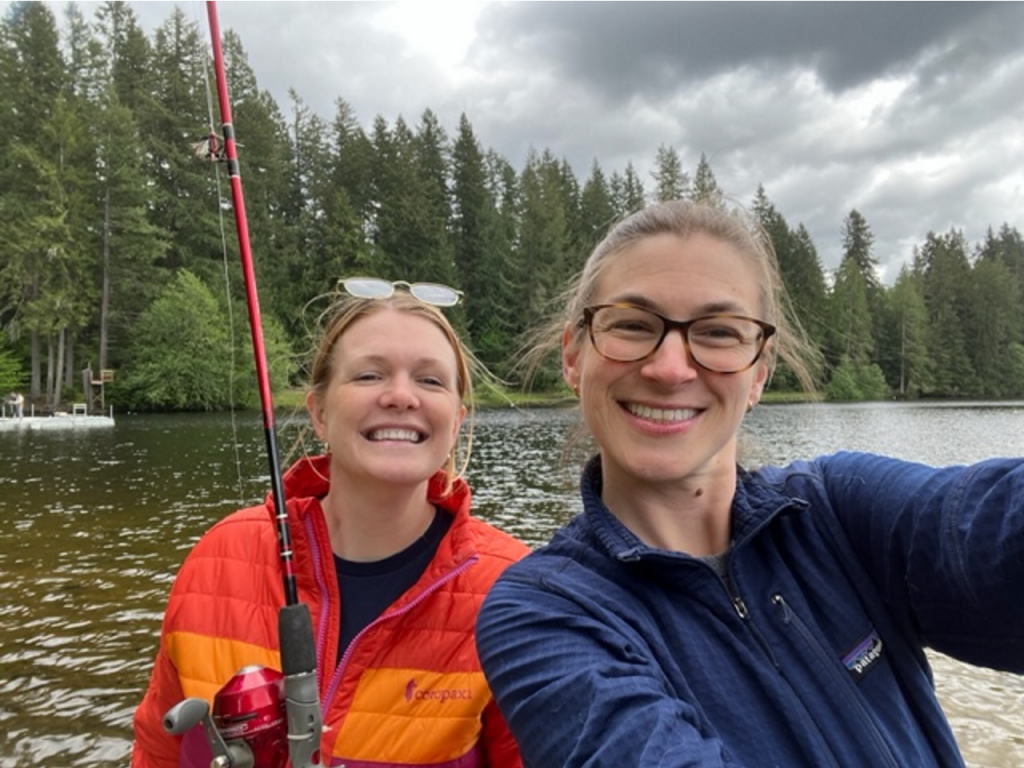
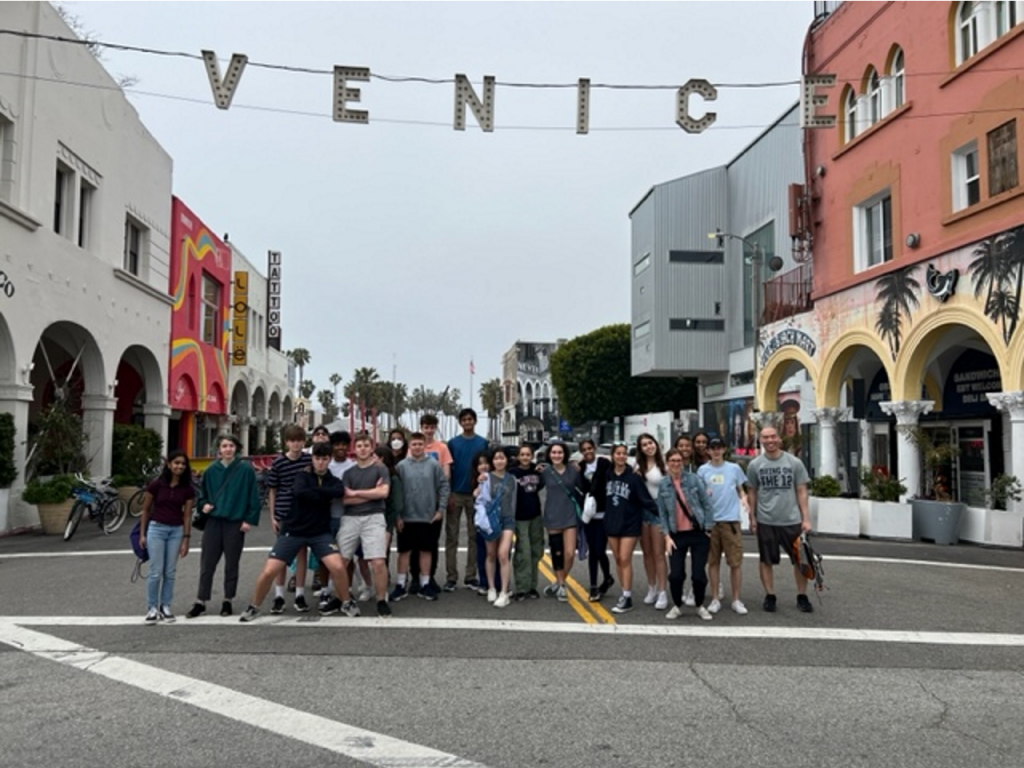
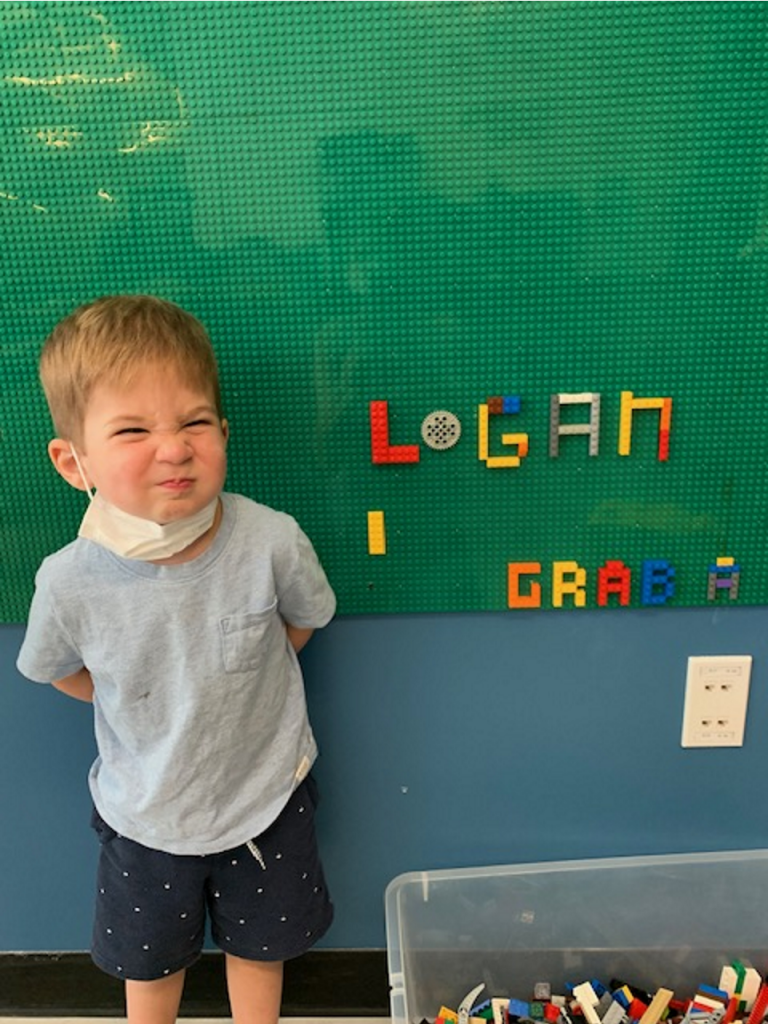
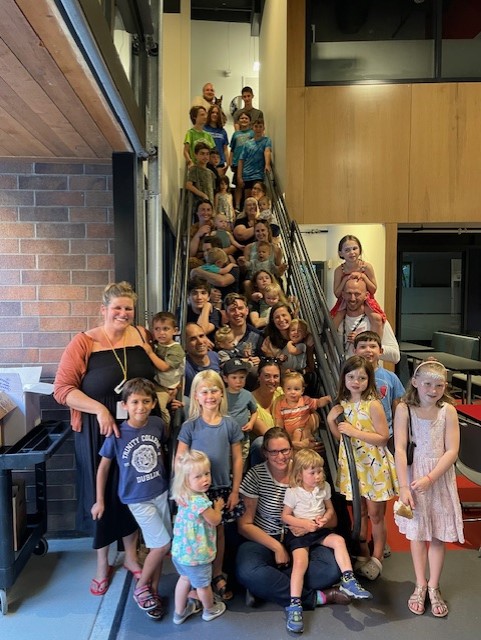
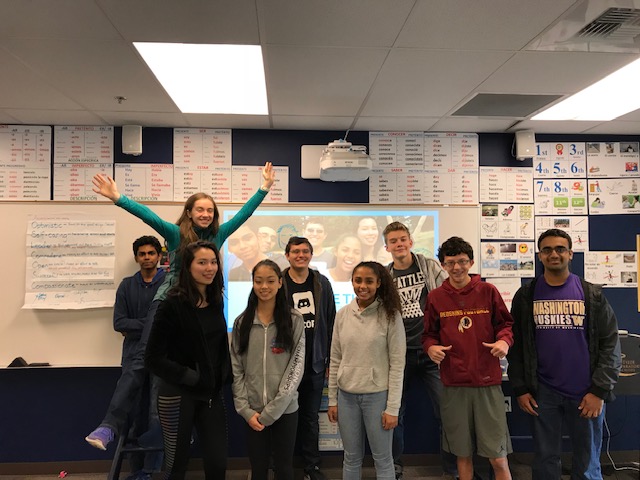
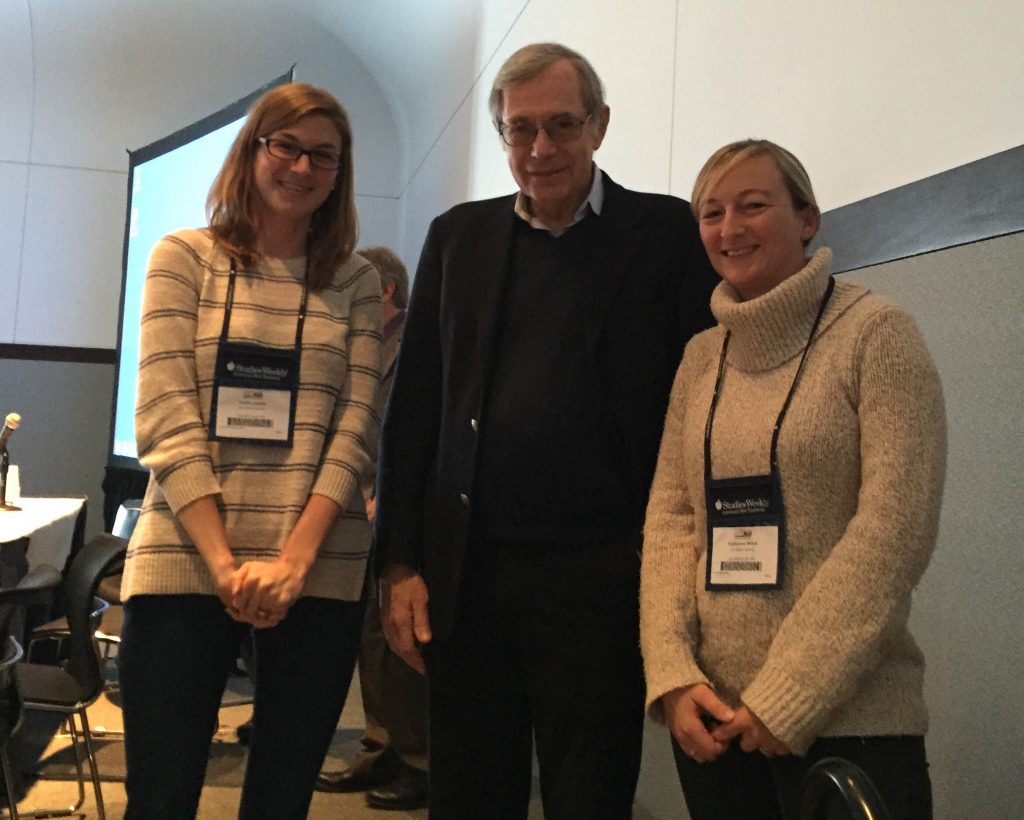
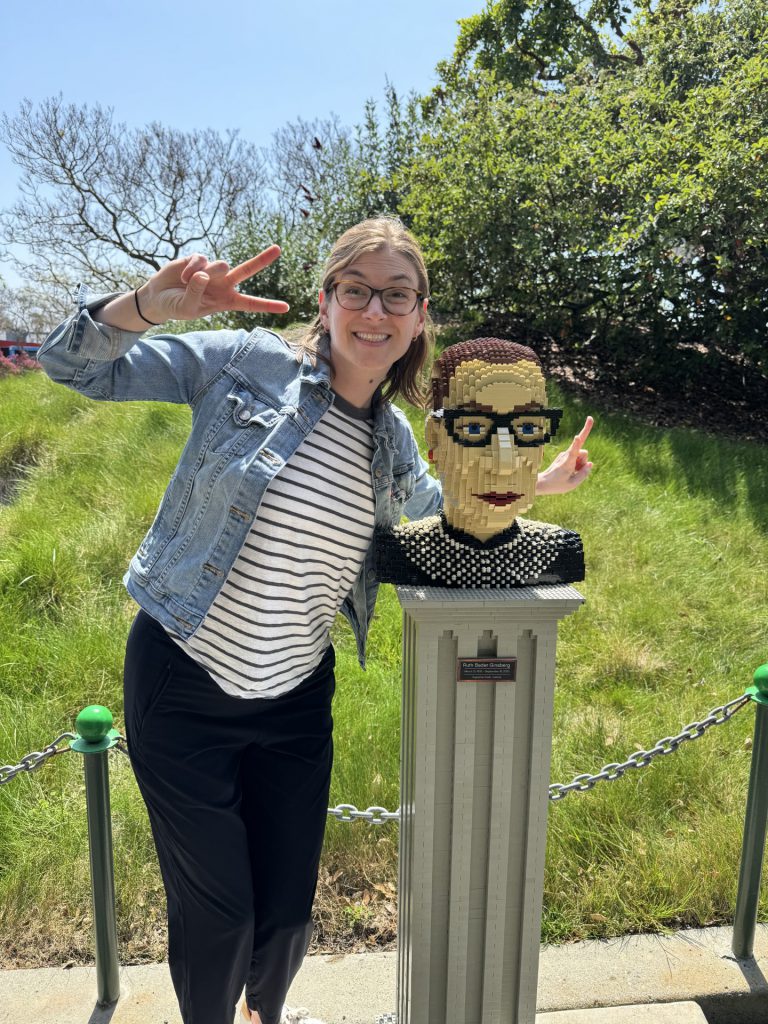
Community Survey
COMMUNITY SURVEY RESPONSES (completed by EPS colleagues and graciously compiled and summarized by Krista Henningson):
** Below is a selection of responses from colleagues. I chose not to include every response because, honestly, it made me feel uncomfortable providing a long list of compliments, and because there was some repetition in responses. I tried to include (and highlight) a few comments for each prompt that speak to my own values as a teacher and colleague, and it was especially meaningful to hear my colleagues notice these values and contributions in our interactions.
2.1 (Community Membership and Support) Have you observed Caitlin acting as a strong and positive ambassador for EPS? If so, how? Please provide specific examples if applicable. If not, any comments?
- Krissy Russell: Caitlin’s dedication to the EPS mission and vision has been clear in all of our conversations thus far. She is open and willing to work together to find a solution that’s best for all parties. I find her positive energy over such an emotional topic to be refreshing and it makes me want to collaborate with her more.
- Kelly Violette: Caitlin is such an effective leader and community liaison; her work as seen from outside EPS represents the best of what our faculty has to offer. Whether collaborating with a guest speaker or coordinating a grade-level fall overnight, Caitlin is effective, professional, and organized, and outside observers witness her being an outstanding educator when they watch her with our students.
- Ryan Winkelmann: … Cait works hard to do what’s right for teachers and what’s best for students and their experience. Specifically, the work she and Karen have done to push forward the change to the 9th grade curriculum shows not only her ability to use best practices and research to push for change, but her ability to be an incredible colleague and advocate for the student experience. There are clear agendas, and we make the most of our time together. She also does a fantastic job of taking the time to work with her colleagues, specifically those of us in the middle school, whose work is not often centered in the broader conversation at EPS.
- Ed Castro: At one of the admission events, Caitlin spoke eloquently about the school’s measured and thoughtful approaches to handling incidents, where students break the rules regarding technology and the high-trust environment we share on campus. It was a good reminder to all of us participating in the event that we work at a special place, and that aspect of our work is precious.
- Brandon Smith: Caitlin is an ambassador for the community by keeping the community grounded in common sense and reality. We need a voice that can speak to reason and on occasions tell us the difficult thing to hear. Caitlin provides this free of charge and every community if it is truly dedicated to growth needs these people.
- Allison Luhrs: Caitlin always has the students’ best interests and learning in mind, whether she’s designing programs, preparing to take a whole class out on an orientation experience, working with middle school teachers to co-facilitate an interactive red-lining project, or championing how a whole class’ experience could be bettered if we backed up and looked at everything with a broader lens instead of just doing things the way we always have. She’s not afraid to explain her [always well-considered] rationale to any groups and stands by her ideas while listening to others’. To me, that’s a huge part of being an ambassador for EPS.
- Karen Mills: The most obvious example (among many) is Cait’s recent work as discipline lead. She and her discipline team saw several needs in the social science curriculum; she organized and worked with them to find solutions that would benefit EPS students and colleagues, and then set forth proposals to the larger EPS community to try to enact those changes. On the same project, she also embodied the interdisciplinary nature of our community by partnering closely with the English discipline and Learning Support, as well as the advisory program and other colleagues across disciplines.
2.1 (Community Membership and Support) Have you observed Caitlin recognizing and supporting diversity in all its forms? If so, how? Please provide specific examples if applicable. If not, any comments…
- Kristine Berg: I monitored a US History classroom for Caitlin when she was out, but teaching remotely. The content had to do with racism and was pretty tough stuff emotionally and I’m sure even more so for the students of color in that class. Caitlin did a fantastic job with the material and with cultivating connections with the students and providing a safe space to talk about a hard subject, even while she was remote. She seemed very comfortable doing this, so I suspect that is something that she does well and often. She had a range of content for the kids in different media – art, posters, photos, documents, text, and music – and presented a broad lens for the students to understand the history. I was super impressed. (Plus she cited her sources, which I love to see!)
- Molly Lori: Caitlin elegantly spoke up at one of our EICL workshops (when someone asked about ‘toxic femininity’) and made me proud to be a woman, too! She explains concepts in a way that’s clear and not aggressive.
- Anne Duffy: From my understanding, Caitlin was part of the team that shaped the history program for the 9th and 10th grades as well as the 11th grade U.S. history course. From the outside perspective, these courses seem to be set up to see history through a variety of lenses. I love how the U.S. history course has units that focus on African-American history as well as U.S. history from the female and LGBTQ+ perspective rather than deliver a more typical U.S. history course. I am making an assumption here but I credit a lot of that to Caitlin’s influence and expertise as a historian.
- Kelly Violette: During faculty meetings, Caitlin often uses her voice to point out inequities or encourage the group to examine things from the student perspective. One example that comes to mind right now is during last year’s conversations around the students who were caught drinking during EBC: Caitlin raised concerns regarding institutional patterns of restorative justice versus suspension and asked us to consider how students might perceive patterns in whose situations warranted which type of disciplinary response. These kinds of thoughtful observations are a trademark of Caitlin’s.
- Wink: I think Cait uses her role effectively to push for diversity, equity, and inclusion. It was during her first year as discipline lead that we constructed a statement centering equity and inclusion in our course bios on our Canvas pages. She is also part of the movement to redo 10 to be less Euro-focused and broaden the scope of histories that students have the opportunity to take.
- Ed Castro: One of the first conversations I had with Caitlin in my role as EICL Co-Coordinator was about supporting diversity after the summer of 2020. The idea was about the humanities as a discipline crafting an EICL statement to include in the course syllabus. That conversation led to a larger discussion about how EICL is presented to students not as a separate idea held in one place on campus, but a belief we hold dear throughout the institution.
- Allison Luhrs: Because Caitlin is consistently looking out for the student experience, she’s also got an eye on individual students’ (and faculty members’) needs. Sometimes this means recognizing the needs of pumping mothers who are members of the EPS adult community, and sometimes this means knowing a particular student has been struggling with anxiety or a difficult home situation. In all cases, advocating for the needs of the individual within the group remains her top concern.
2.2 (Collegial Dynamics) Have you observed Caitlin developing mutually respectful and productive relationships with colleagues? If so, how / when? Please provide specific examples if applicable. If no…
- Kristine Berg: I love working with Caitlin! She’s always clear and patient. She has put a lot of thought into the requests she makes and never wastes my time or energy. It is easy in the rush of the day to disregard someone in an admin/support position, but Caitlin always has a moment to say hello and has always made me feel part of the team.
- Anne Duffy: I LOVE having you on the 12th grade advisor team. You are always willing to share ideas and provide feedback. I also appreciate that you understand that we share a common goal to make the 12th grade experience the best possible. In saying that, sometimes we have to focus on getting something done even though we know it may not be the best experience possible. You have graciously received my sometimes too direct comments when we are pushing against a deadline and we don’t have the time to make something better. I feel comfortable going to you for ideas, for support and to follow up on topics from a meeting.
- Kelly Violette: Because Caitlin is so trustworthy, reliable, and effective in her work, she has earned the respect of her EPS colleagues. She is also consistently friendly, funny, and relational, which helps relationships develop beyond professional trust and into mutual respect and consideration.
- Dan Yezbick: Very much so! Very collegial and has a good balance of personal and professional. Great at recognizing that our stakes in our work ARE personal, but that we can handle them professionally. Great leadership and advocacy for the discipline!
- Allison: While I’m sure there are tons of examples I could point to, the annual Walk and Talk before Senior Dinner is my favorite example of mutually respectful and productive relationships–and one I look forward to enjoying with Cait every year. 🙂 It’s time for a group of colleagues to connect about school, family, hopes, plans, and general goodwill, and involves people in both the MS and US divisions.
- John K.: Yes. I view Caitlin as a measuring stick at this school. One of the benchmarks for me in establishing myself here was earning her respect as a colleague and peer. Now, I view her as someone I can talk to and get advice from about anything. This also seems to me to be a universal attitude toward Caitlin.
- Jen Oakes: Caitlin’s leadership in the history department is marked by really clear, fair thinking, with lots of options for people to work together. I enjoyed the shared final we had last year in Authority and the work we put into creating a finals experience for students that felt substantive and well organized.
2.2 (Collegial Dynamics) Have you observed Caitlin partnering consistently with colleagues on projects (i.e., integration, service learning)? If so, how? Please provide specific examples if applicable…
- Anne: In the upper school, we often share courses with another teacher and working together to make the course even better. This collaboration is not always as smooth as possible. That being said, I know that working with Caitlin would be a full collaborative experience. I have seen Caitlin meeting with the U.S. history team in their collaboration. I know that Caitlin and Wen Yu have a close collaboration of the 12th grade civics experience where the content in the fall trimester was meaningful and connected to current event topics. In addition, I would just repeat my comments from the 12th grade team where Caitlin is a critical member of the team that reliably shares ideas, provides feedback and helps to make things happen during advisory, class meetings, 5th/12th grade experiences, Fall overnight and senior spring retreat.
- Kelly: Caitlin is a desired teammate for any collaborative project because she’s so incredibly competent and effective at whatever she takes on. Balls don’t get dropped on Cait’s watch. I think of Senior Civics, all things related to Grade Level Coordination (like Fall Overnights, which I have attended with Caitlin several times), and Discipline-specific work. Caitlin speaks up, brings valuable perspective, isn’t afraid to push back (appropriately) on prevailing thinking, and demonstrates a true understanding of the student experience in all she does.
- Ed Castro: I planned a visit with a music duo to help introduce students to some indigenous folk music from the Andes and Central America. Part of the visit coincided with the humanities study of immigration, and both group members had compelling stories that tied directly with the curriculum. Caitlin and the other humanities teachers communicated with the group and outlined a solid program for the entire grade. My goal was to offer a unique musical experience tied to equity and diversity for students. Caitlin helped students see the connections between the subjects studied in class discussions and the humanity of the people, their stories, and lived experiences.
- Allison: While I haven’t gotten to work directly on these projects, I love witnessing and hearing about the ways Caitlin looks to partner with Alicia around topics in history that both 7th and 11th graders study. The academic, sure, but also cross-division connection and community–something we as a school sometimes forget to acknowledge and/or intentionally build.